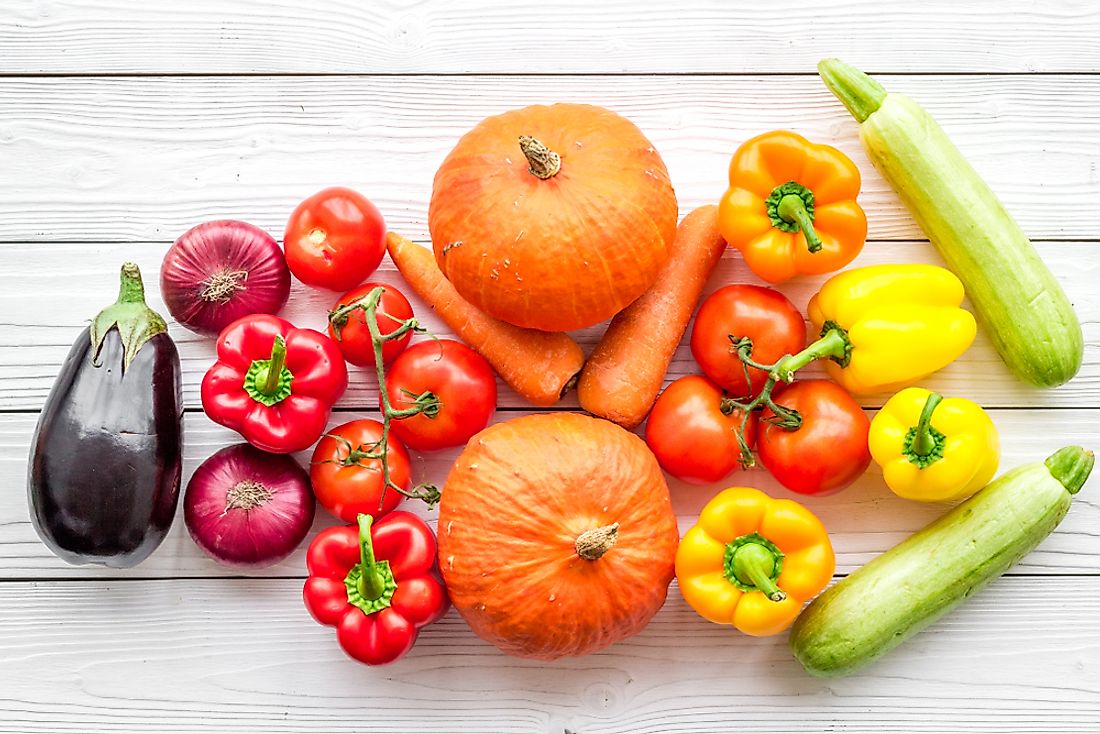Vegetable Intake in the United States

The varieties of food eaten by people all around the world are varied from one place to another. These foods include the likes of dairy and eggs, produce from farms, grains, sugar and fat, meat, and an assortment of other foods and drinks. Depending on the part of the world, the dominant foods may be proteins, fats, or sugars and fats.
US Food Consumption
In the United States, as per data from 2011, every person takes in an average of 3,641 calories or about 2,729 grams of nutrients every day. Dairy and eggs are the highest consumed foods with a daily gram intake of about 756 grams, which makes up about 28% of the total grams intake. Of these 756 grams, milk dominates with 26% while eggs and animal fats each contribute 1%. By comparison, produce accounts for about 740 grams, which is 27% of the total grams intake. Of these 740 grams, vegetables make up 11%, fruits make up 10%, and starchy foods contribute a total of 6% only. In terms of the total calories per person, the US has the fourth highest intake in the world.
Vegetable Consumption in the United States
Looking at the data, the intake of vegetables in 2011 had been more or less the same as it was in the 1960s. For example, in 1961, it contributed about 11% of the total produce per person. However, even though the percentage remained fairly consistent, the quantity of vegetables eaten increased greatly from 613 grams in 1961 to the 740 grams documented in 2011. However, it should be noted that the figure in 2011 was less than the figures of the 1990s and early 2000s that averaged at least 800 grams per person.
The decline in vegetable intake has also been documented by the Centers for Disease Control (CDC) recently in 2017. According to a study the CDC conducted, only one in ten people satisfy their vegetable or fruit needs. The CDC recommends that each adult needs around two to three cups of vegetables every day in order to stay healthy. However, only 9% of adults met their intake in 2015. The consumption was even lower among the poor, men, and young adults.
As a result of this insufficient intake of vegetables, chronic diseases that could be avoided or mitigated by consuming vegetables are now among the top ten leading killers in the US. In fact, seven of these top ten killer diseases can be prevented by eating enough vegetables. Some of the reasons why the people in the US do not eat enough vegetables include high costs of living, limited access to vegetable products as opposed to manufactured foods, and lack of time for preparation. An important thing to note is that most people who do not eat vegetables assume that they do not have the time to prepare vegetables.
Steps to Increase Vegetable Consumption
The CDC has come up with ways to ensure that more people get access to vegetables each year. For example, in the report, the CDC came up with ten strategies for achieving this goal. These plans include ensuring that cafeterias always have access to fruits and vegetables, increase access to stores that sell quality vegetables and fruits, among other strategies.
Vegetable Intake in the United States
| Rank | Food Type | Daily Intake (Grams) |
|---|---|---|
| 1 | Dairy and Eggs | 756 |
| 2 | Produce | 740 |
| 3 | Meat | 381 |
| 4 | Other | 295 |
| 5 | Grains | 291 |
| 6 | Sugar and Fat | 266 |











